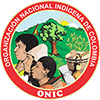Ambaló
LOCATION:
The Indigenous community of Ámbalo, is located in the vicinity of the Crestegallo, Puzna and Gallinazo hills whose heights exceed 3,800 m. of altitude.
POPULATION:
Taking the existing census data of the ancestral territory of the Ambalo people - socio-economic study carried out in 2007 - the Ambaló Reserve consists of 825 families, or 2749 people, 1372 men 49.70%, 1377 women 50.30 %, between paeces, abalo and guambianos people; seated in nine paths. In the ambalo territory, people living in Guambía, Totoró and from other areas of the country live in the so-called “peasant areas”.
LANGUAGE:
Namtrik
It follows that of the entire population 2749 people, 401 people speak Spanish and the native language, the rest - 2348 people - speak only the Spanish language. Undoubtedly, this worries the council, hence the Education Committee has prepared the Community Educational Project aimed at strengthening the Life Plan and the Organization for the recovery of the Territory, Language and Culture.
It is clear that the speaking population of the Namtrik is dispersed in several adjacent areas, hence an approach to the social situation of this language requires differentiated approaches.
CULTURE:
The elders tell that the town of Ámbalo originates from the union of Thunder and the Brava lagoon, major spirits that, when united, fertilize and give rise to a cacique; who goes down the Agoyan river, accompanied by the avalanche. This boy was picked up and raised until he became a man.
And so the town of Ámbalo was born. The traditional authority of the Ambaló people, throughout its existence and its historical presence, has reaffirmed its thinking, identity and culture, at the same time it has built roads, mandates and policies of resistance, autonomy and territorial control, which has been fundamental for that the 33 years of reconstitution of the authority can be commemorated together, who was disappeared by the landowners for more than four decades, during which time we have been reaffirming our existence from the territory and the living harmony deposited in our elders and mayras .
ECONOMY:
The economic activity of its people is mainly based on cattle industry and agriculture.
Sources:
-Blog "Origen Ambaló"
-Portal del pueblo Ambaló - Pueblo Ambaló hacia la consolidación.
-Reglamento Interno Ambaló SILVIA
-Territorio Ancestral Ambaló. Consejo regional Indígena del Cauca.
-Censo 2005
-Mary Luz Flórez Flórez Edison Monroy Machado - El Proyecto Educativo Comunitario -PEC- del Pueblo Ancestral Ambaló; una experiencia política y pedagógica de resistencia y pervivencia cultural. Universidad del Valle. 2015



